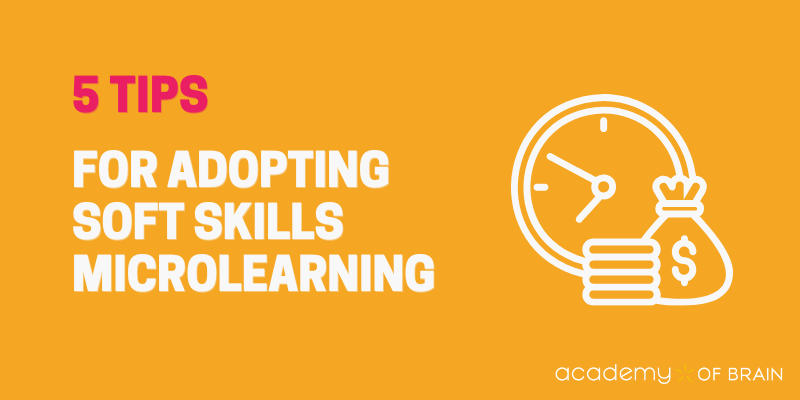
5 tips for adopting soft skills microlearning
SHARE INFORMATION
Inform staff about available soft skills training and the microlearning concept. Academy of Brain supports communication efforts and user engagement.
CUSTOMIZE TO FIT NEEDS
Tailor a learning path for your staff in collaboration with Academy of Brain. All Academy of Brain tutorials can be completed in fifteen minute time slots.
SET COMMON GOALS
Choose a soft skills training program for the team or entire staff, and hold discussions after each microlearning section.
ENCOURAGE
Motivate staff to explore soft skills microlearning content on your organization’s training platform using the search function. Actively speak about the importance of on-demand learning.
MAKE IT A HABIT
Integrate soft skills microlearning into team activities. Utilize online training content during team meetings, leadership mornings, or mentor sessions.”











